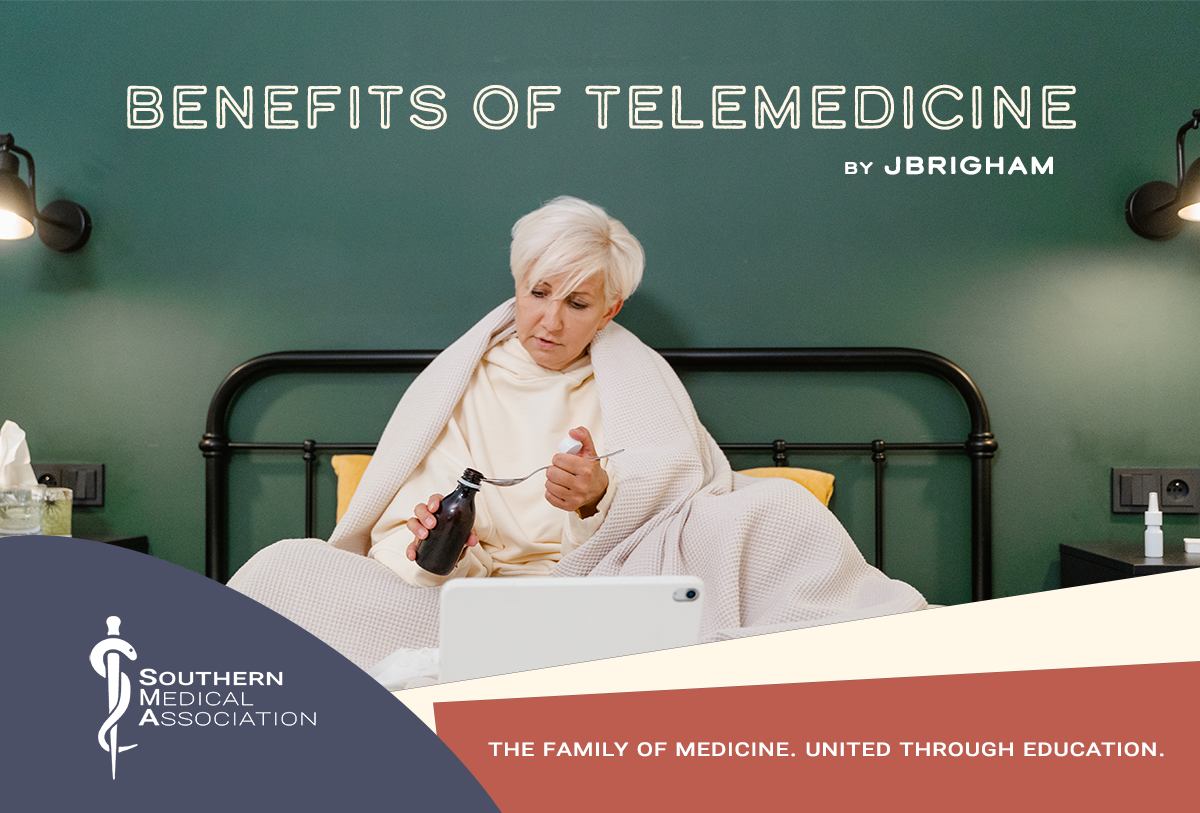
Benefits of Telemedicine
The Benefits of Telemedicine
by JBrigham
Telemedicine has a long and illustrious history. With each innovation in communication technology, medical care has expanded its outreach and lowered costs. Healthcare writer Josh Heurung reports that the first known use of telemedicine was done via telegram in the 1840s. Union army physicians used telegrams to assist in the care of soldiers in the American Civil War.
As time went on, telemedicine evolved with the technological advancements of the time. By the 1910s, it was being conducted via telephone. Then hospitals began using televisions to transmit images to each other in the late 1940s. The advent of the Internet finally brought us the telemedicine we know today.
Modern telemedicine essentially shares the same purpose as it did nearly 200 years ago: to bring healthcare to those who need it the most. With all the advancements we’ve achieved in the medical field, this means that telemedicine is exceedingly useful for our society’s senior citizens. So with that in mind, here are a few benefits they can reap from telemedicine today.
Accessibility
This is arguably one of the most prevalent issues currently in healthcare. Telemedicine provider Wheel explains that barriers to accessibility in healthcare are more commonly experienced by seniors. Many are uninsured, have mobility impairments, or live in rural areas, which can affect their ability to visit medical facilities in-person. Others may not be able to afford healthcare services. The fact that wait times to book doctor appointments can be quite long further complicates these issues.
Telemedicine can help seniors overcome all of these barriers. Appointments can also be set at the convenience of both the healthcare worker and their patient, helping seniors forego wait times entirely. Since they’re remote, there may be no need for seniors with mobility impairments or who live far from urban centers to leave their homes. Telemedicine can be cost-effective as well – it eliminates the need for transportation and may be cheaper than a traditional doctor’s appointment. Finally, it’s available even to those without medical insurance.
Affordability
For the average American, healthcare is already expensive. Over 55% of Americans have medical debt because of things like emergency room (ER) visits, COVID-19 treatments, and mental health treatments. Seniors in particular can be more vulnerable to falls and severe cases of COVID-19, which in turn may bring about the need for such trips to the ER and COVID-19 treatments.
Because telemedicine can be cheaper and more convenient than in-person appointments, seniors can make appointments more proactively — and avoid costs associated with these incidents — by addressing medical issues before they become more serious over time. Many telemedicine platforms also integrate features that physicians can use to consult specialists and even to order lab tests and prescriptions. This streamlining of medical care can allow seniors to pay less for these services.
Continuous Quality Care
Finally, the accessibility and affordability of telemedicine services makes it easier for seniors to get these services over a longer period of time. Via teleconference, healthcare providers can easily prescribe and monitor the entirety of any treatment plans they prescribe to elderly patients. Seniors will also find added value in the fact that telemedicine can be used in line with the Internet of Things, which is essentially a network of Internet-enabled devices. This allows healthcare providers to practice medicine beyond remote video conference calls.
Wearable devices — like smart watches that monitor user vital signs — can record patient information and transmit them directly to healthcare professionals so seniors can receive the majority of treatments from their homes. We’ve mentioned that additional safety precautions need to be taken for patients with conditions like Alzheimer’s — and here more specialized instruments like senior safety alert devices can help. Much like a home security system, these devices immediately alert emergency personnel in case of incidents like a fall.
Telemedicine offers seniors three key benefits: accessibility, affordability, and continuous quality of care. Although that may sound like very few, these benefits are enough for telemedicine to begin improving the collective health of America's senior population.
Content solely for the use of sma.org
Content by: JBrigham
